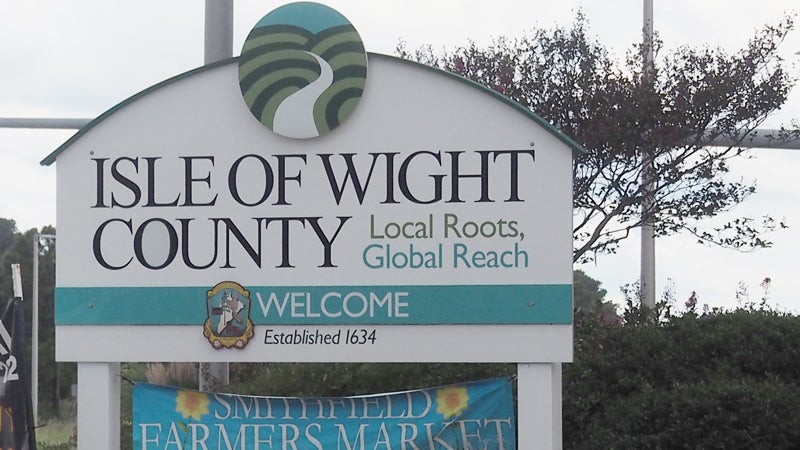Group aims to ‘preserve’ Smithfield
Published 1:57 pm Wednesday, January 13, 2016
By Matt Leonard
Staff writerIn the run-up to Smithfield’s last Town Council meeting a new organization — Preserve Smithfield — was formed to lobby against a 151 single-family home development in Smithfield.
Whether the organization’s efforts were effective or the Smithfield Town Council was already on their side, Council voted 5-2 to deny the needed comprehensive plan change to proceed to the rezoning request.
Preserve Smithfield members said the reason they were against the proposed plan is because it endangered a historic home on the property known as Pierceville. {mprestriction ids=”1,2,3,4,5,6″}
Their mission is vague. On their Facebook page, Preserve Smithfield organizers say they want “progress while protecting our unique heritage.” Their newly elected and first president, Theresa Mulherin, said the group is not yet ready to come forward with alternative plans for the Pierceville property.
“Our group is still refining and formalizing our strategy and plans,” Mulherin said in an email.
But she said that “many others have come forward” with plans the group will take under consideration.
One alternative plan released recently is from Smithfield resident John Burnham.
For Burnham, the future of the property is as a museum and education center that focuses on agriculture.
“Such a center would bolster the appeal and stature and progressive image of our community,” Burnham wrote in the proposal.
The center would focus on cross-curriculum education with a focus on science and history, he explained in an interview.
Regardless of which plan Preserve Smithfield lands on, the property is still owned by Mary Crocker, who has it listed for $2 million.
Crocker’s lawyer, Robert Jones, did not want to comment.
Mulherin said the group was not ready to talk about financing and Burnham said the funding would likely come in the form of grants.
Burnham said the next step is finding a group that can back his proposal, or another proposal that will be an “alternative to the relentless development.”
While he said Preserve Smithfield is currently the only organization actively working on ideas for the Pierceville property, he wasn’t sure they would be “the ultimate group.”
Rick Bodson, project manager of Smithfield 2020, said none of the members of Preserve Smithfield approached him or other members of that organization to work on the Pierceville property.
Smithfield 2020’s website describes the group as a “project team dedicated to identifying and promoting initiatives that contribute to the economic and cultural vitality of the Historic District of Smithfield.”
Smithfield 2020 has led a number of different projects in town involving historic structures. It is a program of Historic Smithfield, Inc., which seeks to improve the “physical appearance, preserving and promoting its history and furthering the viability of its commercial core” of Smithfield.
Historic Smithfield, chartered in 1988, partnered with Smithfield Foods and the town of Smithfield to undertake the multi-year revitalization of the Historic Main Street corridor in the early 1990s. The organization also helped raise money for the South Church Street renovation and assisted with the facelift to the Ivy Hill Cemetery entrance.
More recently, Historic Smithfield acquired the colonial courthouse on Main Street from Preservation Virginia. The restored brick building was suffering from years of intrusive moisture problems, and Historic Smithfield undertook, and recently completed, a $200,000-plus repair of the structure.
“We are understanding of Preserve Smithfield,” Bodson said.
But as far as approving of their mission or goals he said he couldn’t comment until there is more information on what the group wants to accomplish.
Smithfield 2020 released a report on the impact the original proposed development would have on the town. The group concluded that the housing development would have a positive impact, but it was worried about the fit of the homes.
Bodson said “fit” simply refers to the appearance of the structures, which he says is important in the historic area of town.
The report also stated that the development could pull down the average home values in town by bringing in a clientele who are interested in new homes, not the historic ones Smithfield already has to offer.
It also suggests protecting the property until a developer is found that can create an area that looks “like it has developed organically, like a “real” small town.”
The only immediate action the report recommended was for the town to require Crocker to repair the home to meet the standards of what a historic home is Smithfield has to meet. The home, dating back to the early eighteenth century, is undergoing what is known as “demolition by neglect.” Under the town’s historic preservation ordinance, that means the structure is in disrepair due to the neglect of the owner.
After the town approved Crocker to make the needed repairs she instead put it on the market, which is a legally viable alternative.
Bodson said the Pierceville development would likely be brought up at the next Smithfield 2020 board meeting.
(Disclosure to our readers: Smithfield Times Publisher John Edwards was founding president and today is vice president of Historic Smithfield.) {/mprestriction}





